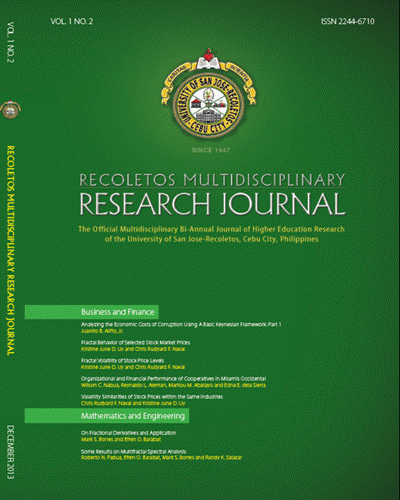ARIMA (p,d,q) and Non-Linear Approximation Models for the Fractal Dimension of the Density of Primes Less or Equal to a Positive Integer
DOI:
https://doi.org/10.32871/rmrj1301.02.20Keywords:
time series model, fractal density of primes, autoregressive, moving average AMS Classification, Number theory, applied mathematicsAbstract
The study compares the performance of the Azura et al. (2013) prediction model for the fractal dimension of the density of primes less or equal to a positive integer x with the performance of an autoregressive integrated moving average model (ARIMA(p,d,q). The actual density of primes used in this study were gathered from published table of primes . Results revealed that the time series model ARIMA(p,d,q) outperforms the Azura et al. (2013) prediction model particularly for larger values of X in the range of forecast values. The time series model is more convenient to use in practice since it only involves the previous calculated values of the fractal dimensions.
References
Laurance, A. J. and Lewis, P. W (1987). Models for Pairs of Dependent Exponential Random Variables. (Office of Naval Research, Grant HR – 42 – 469).
Malik, H and Trudel, R. (1986). Probability Density Function of the Product and Quotient of Two Correlated Exponential Random Variables
(Canadian Mathematical Bulletin, Vol. 29(4), 413 – 418)
Marshall, A. W and Olkin, I. (1967). A generalized bivariate Exponential Distribution. (Journal of Applied Probability, Vol. 4, 291 – 302)
Moran, P. (1967). Testing for Correlation Between Non – Negative Variables. (Biometrika, Vol. 54, 385 - 394).
Padua, R. (1996). Advanced Lecture Notes in Time Series Analysis. (Unpublished Monograph, Mindanao Polytechnic State College)
Padua, R. (2013). On Fractal Probability Distributions: Results on Fractal Spectrum. (SSDSU Multidisciplinary Journal, Vol. 1, 87 – 92, CHED –
JAS B).
Downloads
Published
How to Cite
Issue
Section
License
Copyright of the Journal belongs to the University of San Jose-Recoletos


